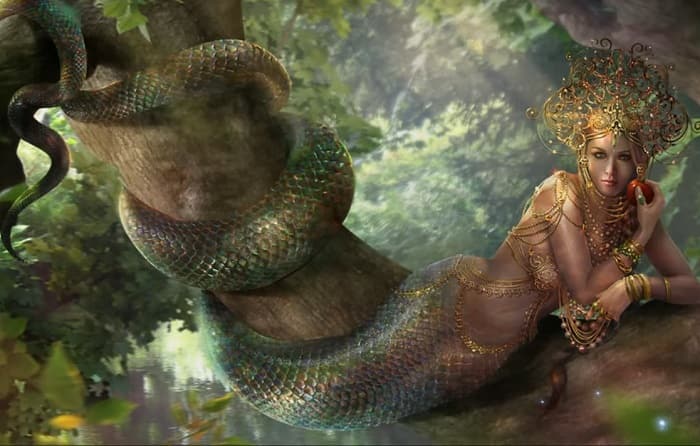In Greek mythology, we find a description of a creature named Echidna, who was half snake and half female figure. Not much information is available about Echidna's origin, but according to the Greek philosopher Hesiod, Echidna's mother was the sea goddess Ceto, making Echidna's likely father the sea god Phorcys. Echidna was believed to have lived inside a huge cave, was Typhon's (a monstrous serpentine giant) mate, and is said to be the mother of many legendary creatures. Echidna's face was quite seductive and half of its body is that of a fearsome snake. Actually, she was half a nymph with glancing eyes and fair cheeks whose beauty was almost impossible to resist.
According to Hesiod, Echidna was immortal, taking her victims to pits deep inside the earth and eating them, which suggests that she was a carnivorous and cannibalistic creature that was neither mortal like humans nor immortal like gods. She could never die and was ageless or never appeared to grow old. She used her poison on enemies or prey, for which no one had any cure, and killing her was possible only for super-powerful monsters. When the Titans were defeated, Typhon was imprisoned under Mount Etna, but Echidna and her children were let go by Zeus. But when Kratos visited Typhon's Cavern at Mount Etna and asked Typhon for help, then Typhon told him that Zeus had imprisoned him, but had released Echidna, and now if he would help Kratos Zeus would not spare Echidna.
Echidna's offspring were quite ferocious, as was the first Orthrus, who looked like a fierce two-headed dog. The second was Cerberus who was a multiheaded dog that guarded the gates of Hades. And the third was Hydra, the many-headed serpent, whose head grew back when one of its heads was cut off. Echidna is also mentioned in Theogony as the mother of Chimera, a fire-breathing beast that was part lion, part goat, and had a snake-headed tail.
For Hesiod the Echidna was immortal, but according to Apollodorus, the Echidna seduced people who passed through her territory, and as they followed her she would kill and eat them. But one day while she was sleeping, Argus killed her, who is said to be the hundred-eyed giant. In the fifth century BC, historian Herodotus wrote about a creature, though, he did not mention its name as Echidna, but it can be inferred from its features that it was Echidna. Because she was depicted as half woman half snake, lived in a huge cave, and was seen as a mother figure.













0 comments:
Post a Comment